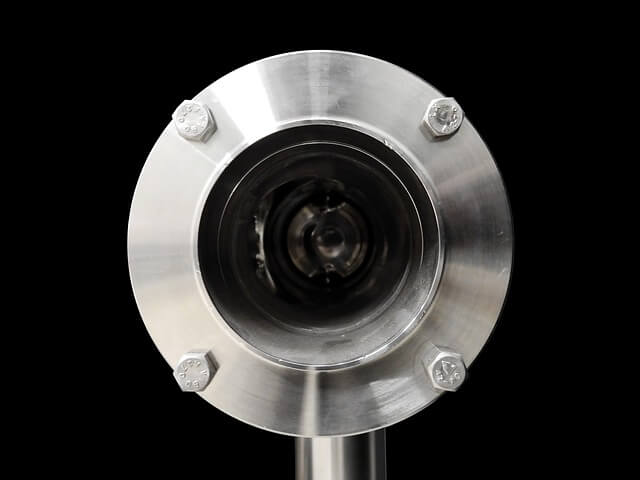Flanges, as crucial mechanical connection components, are widely used in various pipelines, containers, valves, and other equipment, ensuring stable connections and reliable sealing. In modern manufacturing, particularly in industries such as petroleum, chemical, shipbuilding, and nuclear power, the quality of flange machining directly affects the safety and reliability of the entire system. Therefore, the application of CNC (Computer Numerical Control) technology in flange machining is especially critical, as it not only enhances efficiency but also ensures machining precision.
Detailed Analysis of Machining Challenges
- Material Selection and Machining Precision: Flange materials typically include carbon steel, stainless steel, alloy steel, etc. The machining properties of these materials vary significantly. For instance, stainless steel, which has high plasticity and toughness, tends to deform during machining, posing a challenge for precision machining. In CNC machining, controlling cutting speed, feed rate, and depth of cut is crucial. For AISI 316 stainless steel, a recommended cutting speed is 60-80 meters/minute, with a feed rate of 0.2-0.4 mm/rev, which helps reduce thermal deformation and stress in the workpiece during machining.
- Surface Treatment and Tolerance Control: The surface treatment of flanges is highly demanding, as surface roughness directly affects sealing performance. In CNC machining, precision grinding or polishing processes are usually adopted to achieve a surface roughness of Ra 3.2μm or lower. Simultaneously, dimensional and shape tolerances for flanges are controlled within ±0.05 mm to ensure precise fitting during connection.
- Fixture Design and Machining Efficiency: Effective fixture design is crucial for enhancing machining efficiency and ensuring quality. Considering the circular nature of flanges, using a three-jaw self-centering chuck or a specialized fixture can achieve rapid clamping and precise positioning. Additionally, multi-axis CNC machining centers can perform one-time clamping for multi-faceted machining, significantly saving machining time and costs.
- Cutting Tool Selection and Life Management: Choosing the right cutting tools is vital for improving efficiency and reducing costs. Carbide tools are effective in machining stainless steel flanges due to their excellent wear resistance and anti-fracture properties. Monitoring tool wear and regular replacement ensure the stability of machining quality.
Case Study
Suppose there is a need to machine a batch of AISI 316 stainless steel flanges with an outer diameter of 200 mm and a thickness of 20 mm. The chosen equipment is a five-axis CNC machining center, and the cutting tool is a carbide ball-end mill. Specific parameters are as follows:
- Cutting Speed: 70 meters/minute
- Feed Rate: 0.3 mm/rev
- Depth of Cut: 2 mm
- Surface Roughness Target: Ra 3.2μm
- Dimensional Tolerance: ±0.05 mm
The machining process is divided into three stages: rough machining, semi-finish machining, and finish machining. In the rough machining stage, the primary goal is to remove most of the excess material, focusing on efficiency. In the semi-finish machining stage, the focus shifts to the formation of tolerances and surface quality. Finally, in the finish machining stage, the emphasis is on ensuring dimensional accuracy and surface smoothness.
During the entire machining process, special attention should be paid to adjusting cutting parameters and monitoring tool wear. Heat generated during machining must be controlled through effective cooling measures to prevent workpiece overheating, leading to dimensional deformation and internal stress.
Conclusion
CNC machining of flanges is a comprehensive process that involves aspects of materials science, mechanical engineering, and precision manufacturing. By optimizing machining parameters, designing appropriate fixtures, selecting suitable cutting tools, and implementing effective quality control measures, the efficiency and quality of flange machining can be significantly improved. With continuous technological advancements, future flange machining will become even more precise and efficient.
Other Articles You Might Enjoy
- Impeller five-axis CNC precision machining technology
The impeller is the most important part on the rotor, and is generally composed of a wheel disc, a wheel cover and a blade. An integral impeller is an impeller…
- Precision CNC Machining of Steel: High-Volume Production
Precision CNC Machining and High-Volume Production As an integral part of modern manufacturing processes, Precision Computer Numerical Control (CNC) machining brings about unmatched accuracy and consistency in the production of…
- Simplifying Complex Workpieces with CNC Machining Technology
In the ever-evolving landscape of enterprise development, the shapes and structures of workpieces to be processed have become increasingly diverse and complex. This poses a significant challenge for enterprises utilizing…









